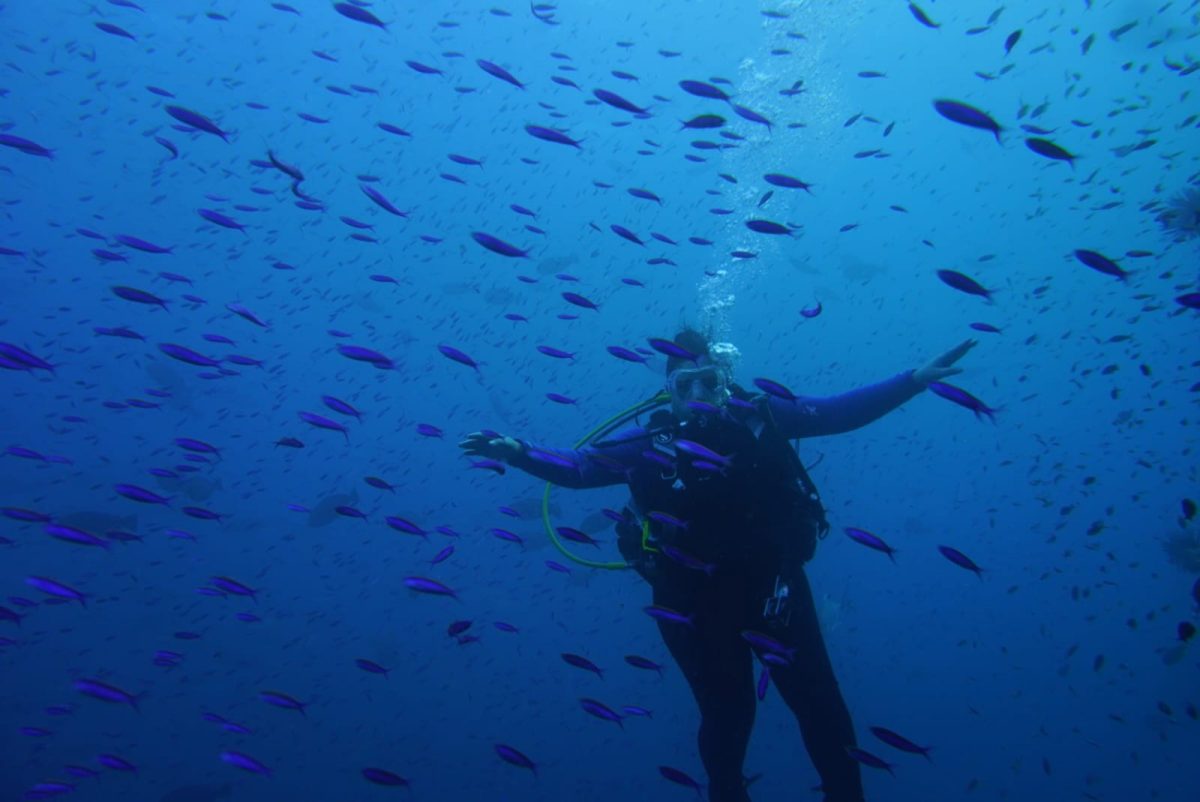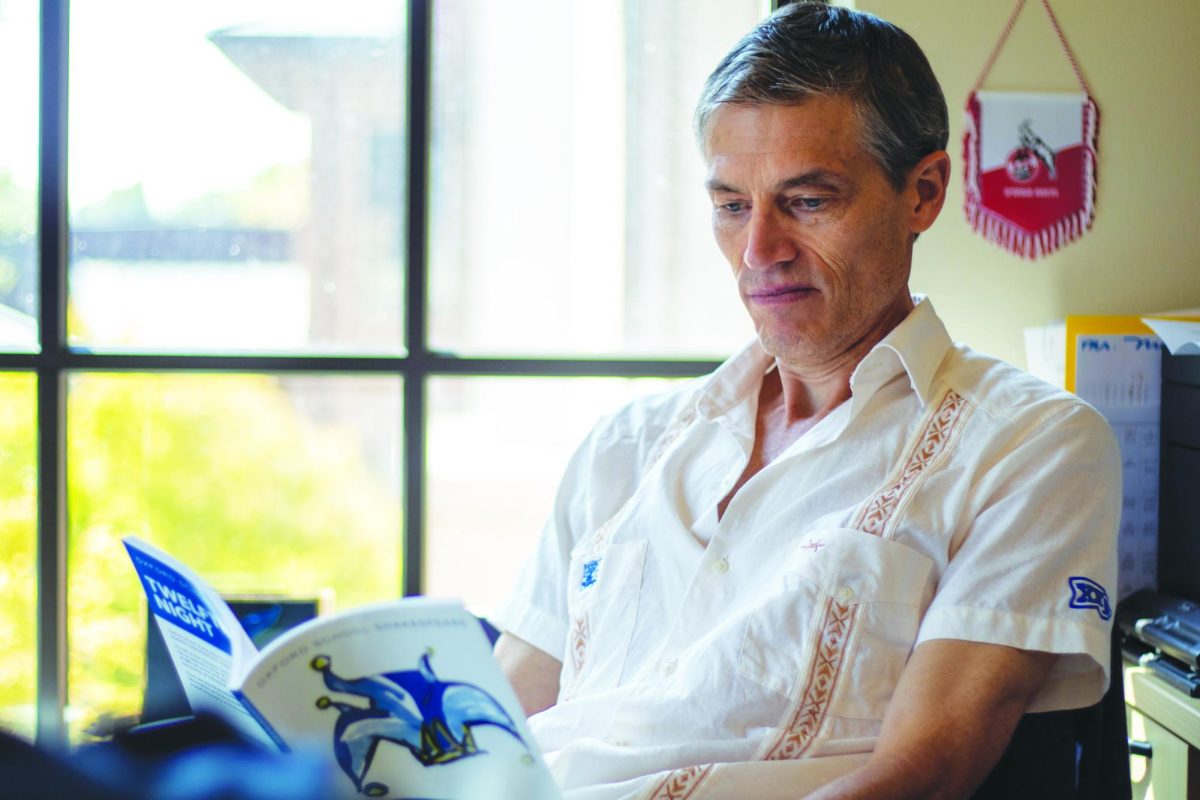Zach Smith studied glaciers in Antarctica, skied across icefields in Alaska and climbed high above the clouds to summit Mount Kilimanjaro. But now, the Middle School science instructor descended into the endless depths below him, searching for the vibrant coral gardens teeming with ocean life beneath the crystal-clear waters of the Pacific.
He was scuba diving in a coral atoll in the Great Barrier Reef – a ring-shaped coral reef formed from an eroded volcano to create an extremely deep shelf, dropping thousands of feet down to the bottom of the ocean.
“We went past the continental shelf out to the coral atoll which was an entire eight-hour overnight trip by boat,” Smith said. “In a regular reef, you dive and look down 50 feet to see the bottom – here, it’s 5,000, 6,000, 7,000 feet, so you never see the bottom.”
An experienced diver, Smith lived in the town of Cairns and aboard boats for three weeks this summer conducting his research. He wanted to find out how the Great Barrier Reef compared to reefs in the Caribbean, where he used to run coral diving programs for teachers.
“When people conceive of it, they think of one reef, but the Great Barrier Reef is probably 10,000 reefs,” Smith said. “And even though I knew it, and I’d seen it on maps, to actually go to a reef and have to drive on a boat to another reef, you sort of fully experience it.”
In addition to visiting the mesmerizing coral reefs, Smith had a unique encounter with a group of migrating Minke whales.
“I’d never encountered whales as an underwater diver,” Smith said. “And so we had an encounter for two, three hours, and it was pretty incredible. They were gigantic, probably eight meters long, and only a couple of meters away. And not only are they big, but they’re really curious.”
Although this vast natural wonder is filled with beauty and marine life, the reef has its problems. With the substantial amount of tourists that come to visit the Great Barrier Reef every year, protecting the reef is the top priority. Smith wanted to see how Australia manages the reef to maintain its condition and shield it from the effects of human activity.
“Like the Amazon is the lungs of the climate for the planet, the Great Barrier Reef is incredibly important for the marine habitat and ecology of the entire South Pacific,” Smith said. “You can’t let everybody out there all the time. They’ll just go and destroy it. They’ll stand on it. So I wanted to see how they limited the boats and where they went, and that was really interesting.”
By limiting the access of tourists to certain areas of the reef, Australia preserves the majority of its condition. Divers like Smith, however, can access those untouched parts to explore the reef in its entirety.
“When most people go to the Grand Canyon, they only go to the South Rim,” Smith said. “Then they stay there for 20 minutes and go ‘wow, that’s really cool.’ And then they go away. But there’s this giant Grand Canyon. So it gets preserved because you’ve limited access to a certain region. This is the same thing that Australia has done.”
Diving with other experienced divers, Smith and his colleagues were able to compare their previous experiences with what they saw in Australia.
“I can go back 20 years ago when I dove in one of the reefs off the Virgin Islands, and it was unbelievable,” Smith said. “If I go back to the same reef today, it’ll be completely different and probably not as healthy. Some of it is direct contact with people who touch it, step on it, break it, or take stuff home – however, a lot of it is temperature change and marine pollution.”
Although well-preserved, the Great Barrier Reef is no exception to this sad reality.
“Even though the Great Barrier Reef has seen less divers at some of the locations, it’s still deteriorated because of the temperature changes,” Smith said. “And this last year has been horrible. It’s been so much warmer that a lot of reefs have become bleached all over the planet.”
Though his findings won’t be published as research, Smith will utilize his research in his teachings.
“My experience on the Great Barrier Reef will be included when I teach my oceanography section this year,” Smith said. “In the book that I wrote on climate, I will add another chapter about oceans’ effect on the climate based on my new experience.”
Trips like Smith’s scuba diving expedition in the Great Barrier Reef expand our understanding of oceanography and the profound impact of climate change on our planet’s precious ecosystems, serving as a poignant reminder of the delicate balance between human exploration and environmental conservation. It is a testament to the beauty of our natural world, but also the urgent need to protect it, not only for the sake of adventurers like Smith, but for future generations to witness.
Beneath the blue horizon
September 21, 2023
Categories:
Science instructor, Zach Smith scuba dives in Australia
More to Discover
About the Contributor
Oliver Peck, Editorial Director








